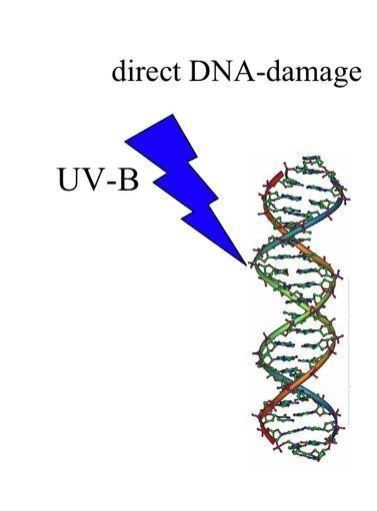
Answer
468.3k+ views
Hint: The random change in the sequence of base pairs in the DNA, brought about by certain factors (it may be a genetic error during cell division or any abiotic external factor) gives rise to variations in the gene pool. This phenomenon was discovered by the famous Dutch botanist and geneticist, Hugo de Vries.
Complete answer: Mutation is essentially a change in a DNA sequence. Mutations is a chance event which arises during mistakes in DNA replication in the process of cell division. Among other external agents, exposing the DNA to ionizing radiation, or to certain chemicals known as mutagens, are the most common reasons for mutations.
It is also caused by a viral infection of a cell. Germline mutations that often occur in the gametes (eggs and sperms) are prone to inheritance, which is why they can be passed on to successive generations.
This may ultimately lead to the change in the gene pool and in turn play a role in the evolutionary process. However, this is not the case for all cells; the DNA of somatic cells, that undergo mutations are not passed on to the next generation.

So, the correct answer is option B. Chromatin fibre.
Note: It is important to note that mutations are not always harmful. Mutations can introduce better DNA sequences and therefore, mutation techniques have been extensively used by scientists in labs to develop high yielding and disease resistant crop varieties.
Complete answer: Mutation is essentially a change in a DNA sequence. Mutations is a chance event which arises during mistakes in DNA replication in the process of cell division. Among other external agents, exposing the DNA to ionizing radiation, or to certain chemicals known as mutagens, are the most common reasons for mutations.
It is also caused by a viral infection of a cell. Germline mutations that often occur in the gametes (eggs and sperms) are prone to inheritance, which is why they can be passed on to successive generations.
This may ultimately lead to the change in the gene pool and in turn play a role in the evolutionary process. However, this is not the case for all cells; the DNA of somatic cells, that undergo mutations are not passed on to the next generation.

So, the correct answer is option B. Chromatin fibre.
Note: It is important to note that mutations are not always harmful. Mutations can introduce better DNA sequences and therefore, mutation techniques have been extensively used by scientists in labs to develop high yielding and disease resistant crop varieties.
Recently Updated Pages
When would the stomata be open class 10 biology CBSE

What is the 5R principle class 10 biology CBSE

Can a food chain start from deer class 10 biology CBSE

What is the role of humans in resource development class 10 biology CBSE

Whether the gametes are diploid or haploid Why class 10 biology CBSE

What are the effects of ozone depletion on plants class 10 biology CBSE

Trending doubts
Which are the Top 10 Largest Countries of the World?

Differentiate between homogeneous and heterogeneous class 12 chemistry CBSE

Difference between Prokaryotic cell and Eukaryotic class 11 biology CBSE

Give 10 examples for herbs , shrubs , climbers , creepers

How much time does it take to bleed after eating p class 12 biology CBSE

Difference Between Plant Cell and Animal Cell

What is spore formation class 11 biology CBSE

a Why did Mendel choose pea plants for his experiments class 10 biology CBSE

Distinguish between asexual and sexual reproduction class 12 biology CBSE




